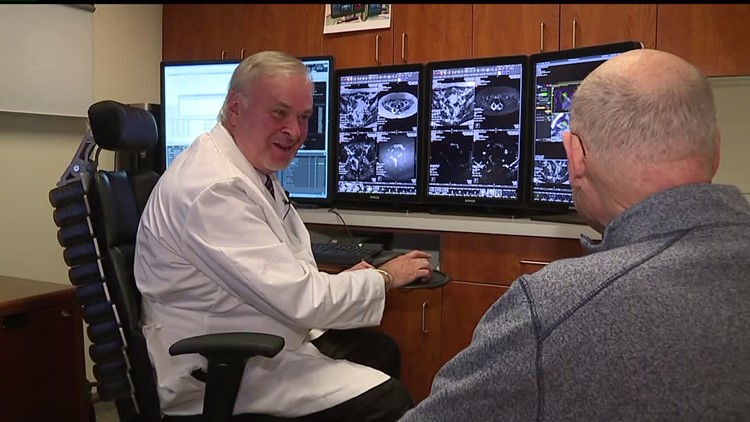The technology uses MRI's and artificial intelligence to diagnose prostate cancer in its early stages. One of Wellspan's patients is the second person in York County to be diagnosed this way.
Upon meeting Karl Fieldhouse, two things are very obvious. The first, he's got jokes.
"I like him," Fieldhouse's wife said. "So, I'd like for him to be around."
"She gets her health insurance from me," Fieldhouse laughed. "It's important."
The second, he's all smiles, despite the fact he was told those three words no one likes to hear.
"I just feel like, I seem to be a person who has awful lot of good luck," Fieldhouse said.
Diagnosed with early-stage prostate cancer last month, Fieldhouse never had any symptoms. It all started with a blood test that came back with high PSA levels. But his first biopsy came back negative. Lucky for him - his doctors were still suspicious and requested a second biopsy. This one using an MRI.
"We just have not been able to see these tumors prior to this technology," Dr. Edward Steiner, Chair of Imaging at Wellspan York Hospital, said.
That technology is directed by MIR guidance and uses artificial intelligence to show things the eye can't see.
"Our eye could only determine gross findings," Dr. Steiner said. "The computer processes the images and gives us curves. They give us certain levels of light and dark and colorizes them so that we look at the images and say, 'wow, that's abnormal'."
Fieldhouses's MRI showed a nodule within the prostate gland, which helped them find the location and diagnose it as cancer.
"If you think that a prostate gland is about the size of a pear, and his tumor was about 1.4 centimeters, so that's maybe a little bigger than my nail," Dr. Steiner said.
And it's the time of his diagnoses that makes this new technology a game changer. Once the cancer has spread past the gland, the cure rate drops from 90% to 30%.
"In patients with early stage disease, they still have options," Dr. Ori Shokek, a radiation oncologist with Wellspan, said. "Some patients can be observed. They can have the option of prostatectomy which means surgically removal. Or they can have external radiation or radiative seeds placed. And they're able to choose between those three options."
Fieldhouse chose the third option. It's the least invasive and it involves X-ray treatments that are 5-6 minutes long, 5 days a week, for 5 and a half weeks.
"My friends would say, 'this is York. You've got to go out of town to have this looked at. They're not going to be able to do the right stuff for you here'," Fieldhouse said. "But what I'm having is state of the art."
Fieldhouse will begin treatment in just a few weeks. One day after it's complete , he and his wife plan on taking a trip to Ocean City, Maryland.



